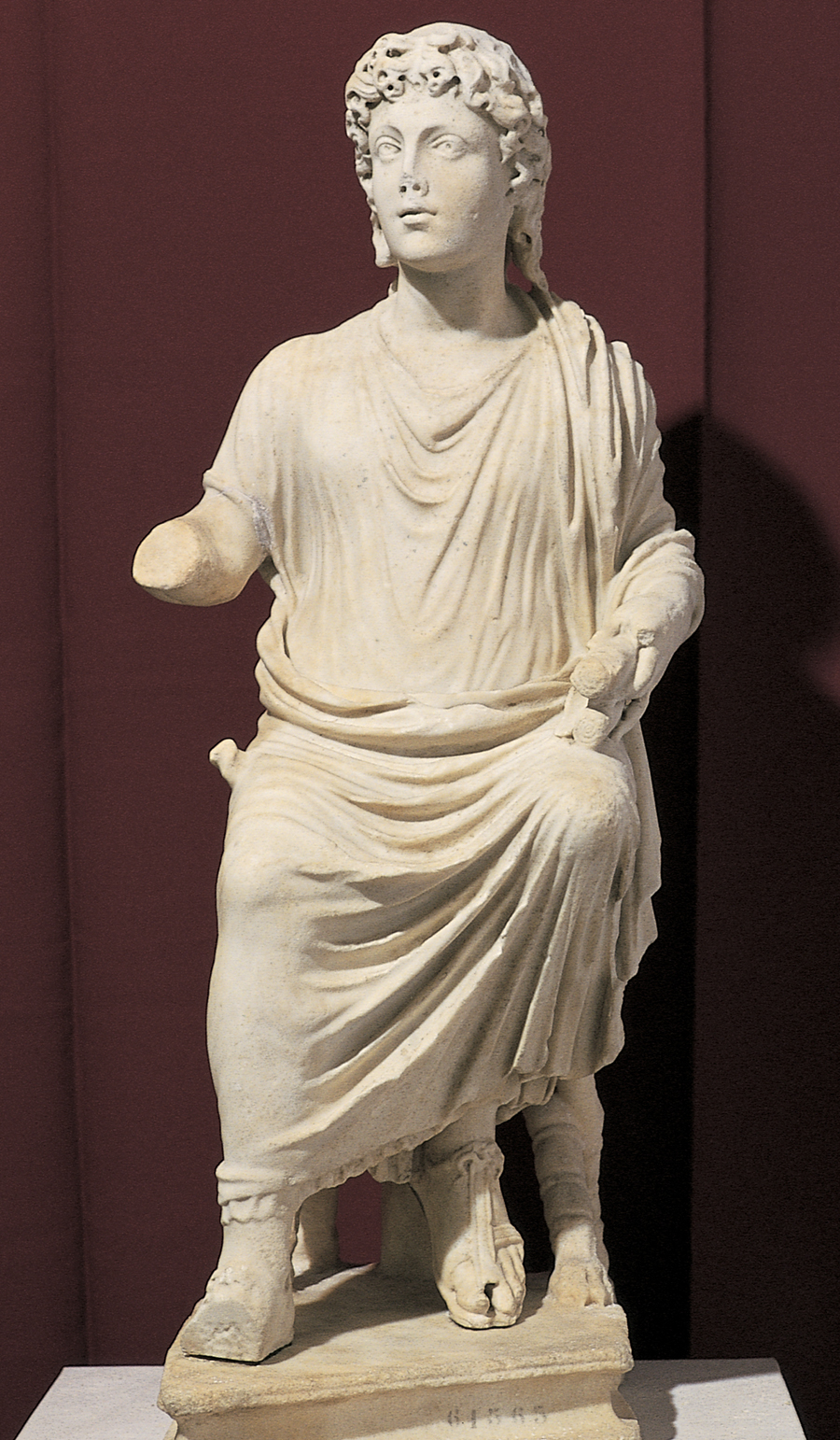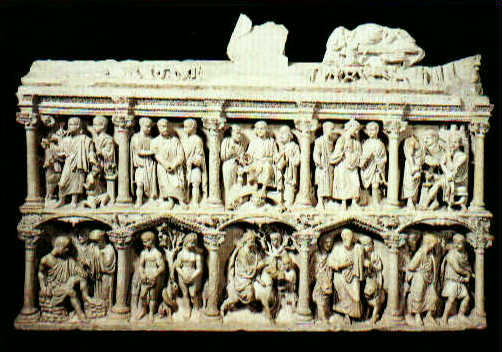Cards In This Set
| Front | Back |
 - |
Colossal Head of Constantine
330 Basilica Nova, Rome Marble like greco-roman divinity statues looming over mortals, returned to youthful Augustan leader image, modeled on Jupiter, personality lost in eternal authority, holding orb (global power), overwhelming power as absolute ruler |
 - |
Arch of Constantine
315 Rome commemorate defeat of Maxentius, largest triumphal arch in Rome, decoration taken from Trajan, Hadrian, and Aurelius monuments, refashioned to honor Constantine, associated with "good emperors" |
|
- |
Suicide of Judas and Crucifixion
420 Ivory relief plaque one of oldest Passion scenes, established iconographical types for medieval narratives of Christ's life, Jesus as bearded youth and impervious to pain (muscular, nude, heroic), displayed (not hanging) on cross, conquered death, contrast between powerful Jesus and limp Judas |
 - |
Statuette of seated Christ
350 Civita Latina, Italy Marble sculpture became uncommon in 4th century, pagans accused for worshiping cult statues, but still greco-roman influence, Christ as long-haired Apollo youth, Roman tunic, toga, and sandals |
 - |
Sarcophagus of Junius Bassus
360 Rome Marble Junius was city prefect of Rome, baptized before he died, stories from Old and New Testaments, decorated in western Roman style, Asiatic columns, deceased not on body of coffin, Christ in center of each compartment (like Roman emperor), emphasis on Christ's divinity as teacher instead of suffering and death |
 - |
Catacomb of Sts. Peter and Marellinus
early 4th century subterranean cemeteries with tunnels of galleries, since Christians buried outside city walls, early Christian art is Roman in style but Christian in subject, lunettes with episodes of Old Testament, orants raising arms in prayer, Christ depicted as young Good Shepherd and teacher at first |
 - |
Mausoleum church of Sta. Costanza
340 Rome central plan building adopted by early Christian architects (vs. rectangular basilica later), similar to Mycenaean tholos and Roman Pantheon, barrel-vaulted ambulatory and 12 columns, Old and New Testament themes, mosaic shows harvesting grapes and making wine (Roman Bacchus vs. blood of Christ) |
 - |
Old St. Peter's Basilica
320 Rome resembles Roman basilicas (like Roman Forum), break with tradition of religious architecture, ideal for place of congregation (vs. greco-roman, which housed statue), reference to imperial authority but rejection of classical structure, beginning of transept, unobstructed view of altar, austere exterior but mosaics and frescoes on inside |
 - |
Parting of Abraham and Lot, mosaic on nave wall
440 Santa Maria Maggiore Rome first major church dedicated to Virgin Mary, mosaics were not only decoration but also way to teach congregation about biblical stories and Christian dogma, dramatic parting of Abraham (good) and nephew Lot (evil), head clusters, dialogue of glance and gesture, Classical attributes: town seems Pompeiian, figures 3D |
 - |
Lunette of Christ the Good Shepherd
Mausoleum of Galla Placidia (brown brick structure) 425 Ravenna not in peasant costume but gold and purple robes like emperor, halo, staff shaped like cross |
 - |
Church of San Vitale
530 Ravenna Justinian, first emperor to bring back golden age to new Rome, new Christian Augustus, unique plan (not completely central plan, 2 concentric octagons, ethereal, fluid quality of space, light through clerestory |
 - |
Ivory plaque with Justinian as world conqueror
mid 6th century Constantinople union of Roman imperial power and Christian authority, twisting dynamic figures and play of light and shadow, Earth and Victory personifications, barbarians paying tribute, presided by figure of Christ carrying cross and giving blessing, timeless disembodied, symmetrical quality |
 - |
Hagia Sophia
535 Constantinople designed by Anthemius of Tralles and Isidore of Miletus (keen aesthetic sense), rectangle with double narthex leading to broad atrium, single projecting apse (minarets and buttresses added later), fluid and flowing space within, domed units pulling weight of large dome down, pendentives (curved triangular sections built into corners of main square, serves transferring of weight), used bricks and mortar instead of concrete, otherworldly space, revelation of divine |
 - |
Justinian and Theodora with attendants
547 Church of San Vitale Ravenna Both proceed toward apse, central location, wearing crown, halo, purple robe, connection between bishop and ruler (balance between church and state), highly aestheticized bodies, portrait quality, many mosaics |
 - |
Apse Mosaic of Sant Apollinare amidst sheep
540 Sant Apollinare in Classe Ravenna rectangular structure, earthly and heavenly zone, orant gesture, living embodiment of cross, narrative element, understand meaning symbolically, easy to read, John Peter and Paul as sheep, cross as Christ's death, lamb as martyrdom |



